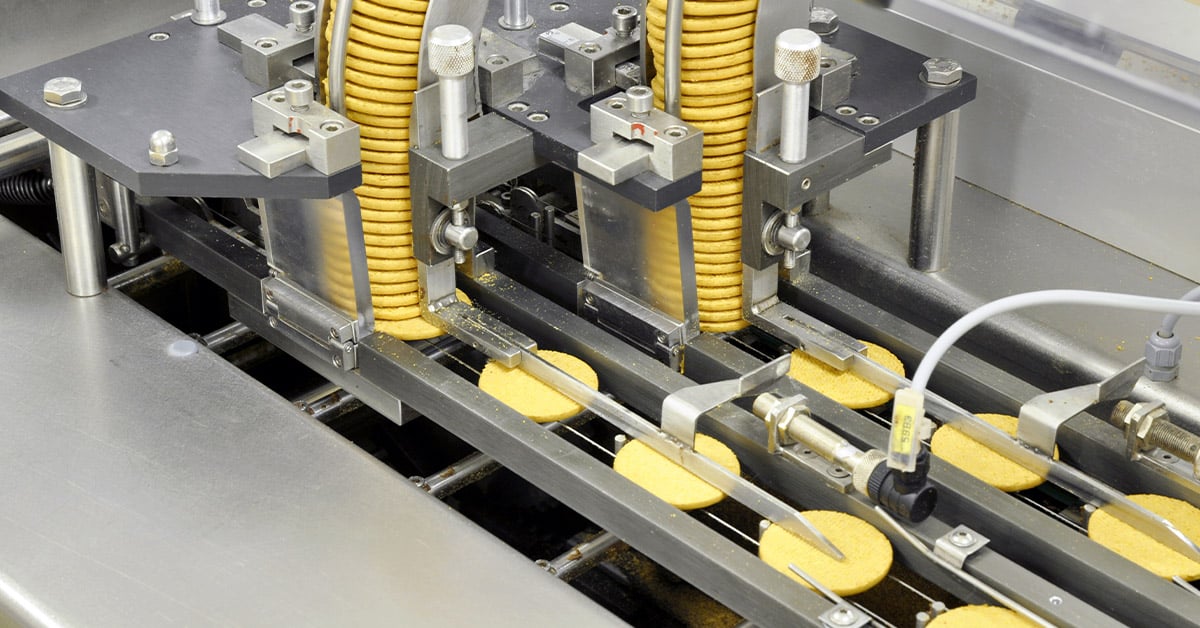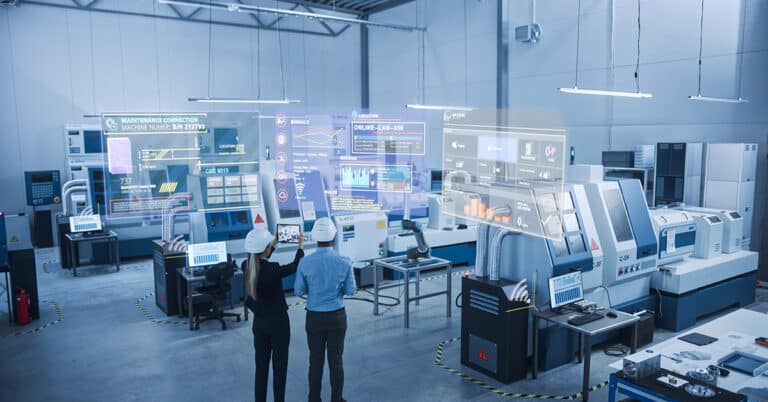Machine maintenance is an expense that eats into margins. In highly competitive industries, that creates pressure to do the work as quickly and effectively as possible. For manufacturers in food and beverage, predictive maintenance provides a way to meet this challenge.
Predictive maintenance is about anticipating when machinery needs attention based on history and data from condition monitoring sensors. This blog explores the value of adopting this strategy, what’s involved in implementation and the benefits to be expected.
Unique challenges for food and beverage manufacturers
A combination of tight margins, customer expectations and a strict regulatory environment create a complex set of challenges for production and, by extension, for the maintenance function. The consequences are seen in:
- High speed machinery: Speed drives down costs, but parts tend to wear quickly under high loads. Efficient lubrication minimizes wear and heat build-up at friction points, and regular greasing and oil changes are part of the maintenance schedules. Safety must be maintained at all times.
- Expectations for quality and consistency: Customers expect the same experience every time they consume the product regardless of when and even where it was made. Achieving this requires excellent process control, especially over variables such as heating and cooling.
- Regulation: Food and beverage manufacturers are expected to follow Good Manufacturing Practice (GMP) and comply with regulations like those imposed by the Food Safety Modernization Act (FSMA). This mandates documentation along with equipment cleanliness.
- Cleaning and sanitization regimens: Good hygiene practices are critically important but water and caustic chemicals create corrosive conditions that can attack polymers, coatings and electronics.
- Critical equipment: Upstream equipment such as chillers and mixers often feed multiple cooling, molding and packaging lines. Likewise, HVAC and air handling systems provide the environmental conditions necessary for hygiene and efficient processing. If any of these go down unexpectedly, other machines will quickly be idled, bringing production to a halt and wasting raw materials.
How to implement predictive maintenance in food & beverage processing
Predictive maintenance entails identifying when work will be needed, and then scheduling and carrying it out at a time convenient for both maintenance and production operations. Making this happen requires two core elements: sensors that gather data on machine condition and tools for storing that data and analyzing it to generate actionable information.
Many sensor technologies are used to measure key machine parameters. Data storage and analysis are typically handled in the cloud, by an on-premises Computerized Maintenance Management System (CMMS) or by a combination of the two.
Here’s a closer look at the sensing and analysis components of a predictive maintenance system.
Predictive maintenance technology
Temperature and humidity are two widely used food and beverage sensors. Their primary application is for process and quality control, but they can also supplement machine monitoring sensors. Aspects of machine function measured as indicators of machine health include:
- Temperature: Spot temperature measurement with thermocouples or RTDs is used to monitor friction points such as bearings. Wide-area, non-contact thermal imaging is used for checks on motor windings, gearbox operation and electrical cabinets.
- Vibration: Changes in the vibration signature of rotating equipment like fans, pumps and motors often signal the onset of wear or other deterioration.
- Flow: Changes in flow rates, especially when taken in conjunction with the output of various food and beverage temperature sensors, can indicate problems with pumps or filtration systems.
- Pressure: Out-of-range pressure readings can indicate problems with seals and gaskets. In addition, fluid systems in food and beverage operations use air, water and steam to operate and control production processes.
- Oil condition monitoring: Lubricating oil becomes contaminated and breaks down over time. Oil condition monitoring ensures changes are done at optimal intervals.
Sensors used for condition-based monitoring need a means of communicating data to the CMMS or other storage location. Wired Ethernet is still an option, although many sensor manufacturers also offer wireless protocols such as Bluetooth and ZigBee. Cellular networks are sometimes used on very large sites.
To reduce data volumes, many sensors incorporate edge computing capabilities. This enables their configuration for filtering/pre-processing, data analysis and exception reporting.
CMMS integration
A CMMS is a prerequisite for condition monitoring in food and beverage manufacturing. Besides holding histories of inspection and repair work done on machinery and linking to the maintenance stores, it forms the core of the predictive maintenance services.
Data from machine health sensors is captured and analyzed for indications of impending problems. Increasingly, this analysis is undertaken by deep learning systems with the ability to discern patterns and trends in large and complex data sets. Recommendations are passed to maintenance planners so parts can be ordered and work scheduled as needed.
Benefits of condition monitoring in food & beverage manufacturing
Generating information about equipment health from the many food and beverage sensors deployed across a line or throughout a plant is key to improving maintenance effectiveness and reducing costs. Specific benefits include:
- Lower equipment repair costs: Planned maintenance is less expensive than reacting to breakdowns. Work can be scheduled for convenient times and there’s no need to pay for priority shipping of replacement parts.
- Less waste: Breakdown maintenance inevitably means spoiled product. Fewer breakdowns mean less of this type of waste.
- Lower spare parts inventories: Fewer parts are needed on the shelves when usage can be anticipated and orders placed in a timely manner.
- Reduced equipment downtime: Predictive maintenance reduces breakdown frequency and helps raise OEE.
- Improved schedule adherence: Preventing breakdowns avoids disruptions that result in late shipments and overtime working to catch up.
- Longer asset life: Attending to wear and other deterioration before it becomes a serious problem helps machinery last longer.
Using predictive maintenance to improve food & beverage supply chain
For food and beverage manufacturers, the opportunity to anticipate potential points of failure goes beyond the production machinery. Warehousing systems and equipment are candidates for condition monitoring, as are the trucks and refrigerated trailers used in distribution. For both use cases, predictive maintenance prevents breakdowns and reduces the disruption resulting from downtime. In food and beverage, the benefits of condition monitoring extend from the producer out to the retailer!
Support for machine maintenance
When margins are tight, as in much of the food and beverage sector, manufacturers must take every opportunity to drive down costs. As an enabler of predictive maintenance, condition monitoring offers businesses a way of anticipating future repair needs so work can be planned and performed in a cost-effective manner.
As the leader in outsourced maintenance, ATS helps manufacturers save money through better asset management. Contact us for details.


